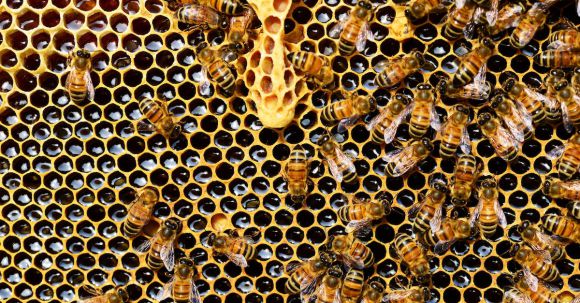Bees are remarkable creatures that live in highly organized and efficient societies known as hives. Within these hives, bees communicate with one another through a unique system of signals and dances. This communication is crucial for the survival and success of the entire colony. In this article, we will explore the fascinating ways in which bees communicate with their hive.
The Waggle Dance: A Language of Direction
One of the most well-known forms of bee communication is the waggle dance. This dance is performed by worker bees to communicate the location of a food source to their hive mates. The dancer moves in a figure-eight pattern, waggling its abdomen and producing specific vibrations and pheromones.
The direction of the dance corresponds to the direction of the food source relative to the position of the sun. For example, if the food source is located directly towards the sun, the dancer will perform the waggle dance in a straight line. If the food source is located at an angle to the sun, the dancer will adjust the angle of the waggle dance accordingly.
The length of the waggle run also conveys information about the distance to the food source. A longer waggle run indicates a greater distance, while a shorter waggle run indicates a shorter distance. By observing and interpreting the waggle dance, other bees can accurately navigate to the food source and bring back valuable resources to the hive.
Pheromones: Chemical Messages
In addition to the waggle dance, bees use pheromones to communicate with one another. Pheromones are chemical signals that can be detected by other bees through their antennae. These chemical messages play a vital role in maintaining the social harmony and organization within the hive.
For example, the queen bee produces a pheromone known as queen mandibular pheromone (QMP). This pheromone signals the presence of a healthy and fertile queen in the hive. It helps to maintain the unity and cooperation among the workers and prevents them from developing ovaries and laying eggs themselves.
Other pheromones, such as alarm pheromones, are released when a bee is threatened or injured. These alarm pheromones alert other bees to the potential danger and trigger a defensive response from the colony. By communicating through pheromones, bees can quickly and effectively respond to changes in their environment and protect the hive as a collective unit.
Vibrations: Tactile Communication
In addition to visual and chemical communication, bees also use vibrations as a form of tactile communication. Bees can create vibrations by rapidly contracting their wing muscles while keeping their wings closed. These vibrations can be transmitted through the honeycomb, allowing bees to communicate with one another even in complete darkness.
Bees use vibrations to convey a variety of messages within the hive. For example, when a forager returns to the hive with a full load of nectar or pollen, it will vibrate its body against the cells of the honeycomb. This vibration signals to the worker bees that the cells are full and need to be capped.
Vibrations can also be used to signal the presence of a queen cell or to coordinate the activities of the workers during swarming. By utilizing vibrations as a form of communication, bees can efficiently coordinate their actions and maintain the smooth functioning of the hive.
In Conclusion
Bees have developed a complex and sophisticated system of communication to ensure the survival and success of their hive. Through the waggle dance, pheromones, and vibrations, bees can convey vital information about food sources, danger, and hive maintenance. This remarkable communication system allows bees to work together as a highly organized and efficient society, making them one of nature’s most fascinating creatures.





